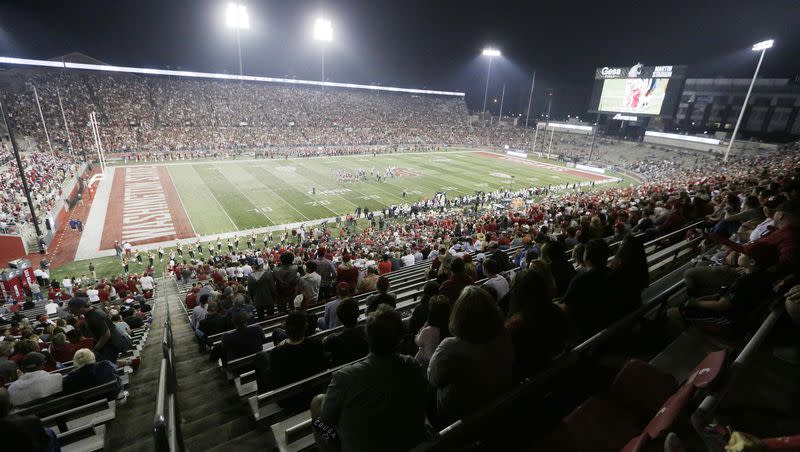Conference realignment hasn’t always been kind to Utah State. Is that about to change?

Conference realignment hasn’t often been kind to Utah State.
First, the Aggies were left out of the Western Athletic Conference, again and again and again — starting in 1962 when the conference was founded, and then six times over the following 36 years as the league expanded, growing to 16 schools at its peak.
When the Mountain West Conference was created in 1998, the Aggies weren’t even on the radar, neither to join the new conference nor the depleted WAC.
Of course, in 2005 Utah State finally was invited to join the reconfigured WAC, and in 2013 after the Mountain West saw defections by Utah, TCU and BYU, the Aggies made the move to the MW.
Still a member of the MW 10 years later, conference realignment may be taking a turn in the Aggies’ favor for once.
Reported by Yahoo Sports’ Ross Dellenger Tuesday, the MW and the remaining two Pac-12 schools — Oregon State and Washington State — are in the final stages of creating a scheduling alliance.
Related
For football only, the agreement is expected to be for a single season — 2024 — although there is expected to be an option to extend the deal an additional year.
According to Dellenger, a $14 million fee will be paid out to the MW and in return the conference’s teams will play one less league game next season and replace it with either Oregon State or Washington State.
“The two Pac-12 members will not be eligible for the MWC championship and will compete as quasi-independents under the Pac-12 banner,” Dellenger writes. “Those Mountain West schools with previously scheduled nonconference games against one of the two schools will play the other as well during the same season.”
A scheduling alliance isn’t conference realignment, but that is expected down the line, writes Dellenger, with OSU and WSU becoming MW members.
“While there is not expected to be a contractual requirement for a long-term merger between the two entities, there is an intent and understanding of full-time membership for OSU and WSU in the Mountain West or a merger,” writes Dellenger.
The addition of Oregon State and Washington State, both of which are committed to continued spending at a Power Five level, writes Dellenger, pending the acquisition of more than $400 million in Pac-12 Conference assets this year and more than $100 million in additional assets through 2025, would make the MW without question the premier Group of Five conference.
That status, coupled with the expansion of the College Football Playoff to 12 teams, would theoretically give all MW teams a better shot than ever at competing in college football’s most significant postseason contests, as the 12-team playoff will include the highest ranked G5 conference champion.
Utah State has proven capable of winning the MW as currently constituted, as demonstrated in 2021, the same year that the Aggies defeated both Washington State and Oregon State.
The MW would also be significantly more stable, a departure from recent years when San Diego State, Boise State and UNLV had been speculated often as possible additions by the soon-to-be defunct Pac-12 Conference.
According to Dellenger, the merger of the MW and Pac-12 could actually lead to the end of the MW, though, and the continuation of the Pac-12.
“The two entities — the Pac-2 and Mountain West — have been sporadically engaged in discussions over their futures together for the last several weeks,” Dellenger writes. “That includes Mountain West schools merging with the two to compete under the Pac-12 brand — a way to preserve the league.”
Either way, Utah State would be in the strongest conference it has been in since before the creation of the WAC. Not bad for an Aggies’ program that has so often been left behind.

